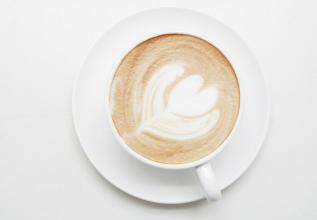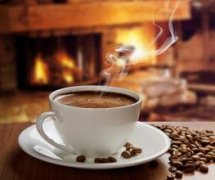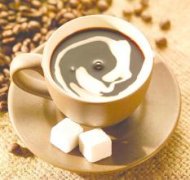A brief introduction to the treatment method of grinding degree and baking degree of fine coffee beans in Cliff Manor

Granules: plump;
Recommended baking method: medium baking;
Blue Mountain coffee is low in caffeine, less than half of other coffees, in line with modern health concepts. The same coffee tree species, whether grown in Hawaii, Kenya, Papua New Guinea or anywhere else with similar climates, did not produce the flavor of Blue Mountain coffee beans.
Pure Jamaica Blue Mountain Coffee combines the unique sour, bitter, sweet and alcoholic flavors of coffee perfectly to form a strong and attractive elegant flavor that is unmatched by other coffees.
Blue Mountain coffee lovers say: "It's a coffee beauty with all the advantages of good coffee in one."
"It's aromatic, smooth, mellow, and it feels precious to me like a gem," said Jim, general manager of Pitt's, a coffee and tea company known in the United States. It is precisely because the taste of Blue Mountain Coffee is moderate and perfect, so Blue Mountain Coffee is generally drunk in the form of black coffee.
"Its liquid is golden yellow under the sun and tastes very smooth. Coffee books say that Blue Mountain is the only coffee in the world that has both bitterness and sourness and can be enjoyed. After drinking it, you will understand."
Blue Mountain Coffee's Secret
Why Blue Mountain Coffee tastes pure "secret": their coffee trees all grow on rugged hillsides, picking process is very difficult, non-local skilled women simply can not be competent. It's important to pick coffee beans that are ripe, as immature or overripe can affect the quality of coffee. The beans are shelled the same day and allowed to ferment for 12-18 hours. Coffee beans are then washed and sifted. After that, the process is drying, which must be carried out on concrete floor or thick blanket until the humidity of coffee beans drops to 12%-14%. Then they are stored in special silos. When needed, it is taken out and roasted, and then ground into powder. These procedures must be strictly controlled, otherwise, the quality of coffee will be affected.
The best Blue Mountain coffee is undoubtedly one of the best coffee available. While price can guarantee an adequate supply of Blue Mountain coffee, it does not guarantee the coffee has the best flavor. Also, this coffee tastes a lot more expensive than it looks. To taste its best flavor, put in more coffee beans than other coffee, otherwise the flavor will be a little different, so the flavor lies in it than the price of coffee to add 10% to 15% more coffee beans.
There are three varieties of coffee in Jamaica: Jamaica Blue Mountain Coffee, Jamaica High Mountain Supreme Coffee Beans and Jamaica Prime Coffee Beans. Among them, Blue Mountain Coffee and Alpine Coffee are divided into four grades. From the top to the bottom of the quality points are: NO.1, NO.2, NO.3 and PB, PB is round beans. According to CIB standards, only coffee grown above 666 meters above sea level is called Jamaica Blue Mountain Coffee; coffee grown below 666 meters in the Blue Mountains of Jamaica is called Alpine Coffee; coffee grown outside the Blue Mountains is called Jamaica Coffee. It turns out that Chinese coffee industry generally has a wrong understanding that only coffee planted in the Blue Mountain area above 1800 meters above sea level can be called Blue Mountain Coffee. In fact, there is only one manor on the mountain crown above 1800 meters in the Blue Mountain Mountains, Amber, which is descended from Chinese people. The manor's main surname is Lyn(Lin), whose ancestral home is Guangdong, China. The manor has only 30 hectares of land and its yield is very small. Blue Mountain Coffee is mainly distributed in John Crow, St. John's Peak,Mossman's Peak,High Peak,Blue Mountian Peak and other five mountain areas in the Blue Mountains.
The harvest period of Jamaica Blue Mountain Coffee is from June to November every year. It is generally picked by hand. After picking, it goes through washing, peeling, fermentation, dehydration, drying, shelling and baking in order to get a ripe Blue Mountain Coffee bean. In the green bean processing process, each step has a special person responsible for quality supervision. For the very precious Blue Mountain coffee, the packaging and transportation methods adopted by the Jamaica government are also different.
Flavor: Very intense aromas with persistent fruity notes;
Blue Mountain coffee is not packed and transported in bags like other coffees, but in barrels of 70kg/barrel, 18kg/barrel, 15kg/barrel. Jamaica was also the last country to still ship coffee in traditional barrels. Jamaica Blue Mountain Coffee beans must obtain a Certificate of Quality from the Jamaica Coffee Industry Council, which is the only body in Jamaica authorized to issue such certificates. And each batch of exports will have a special quality supervision expert responsible for sampling, roasting, grinding and brewing into coffee, and finally make a standard judgment on why Blue Mountain coffee tastes pure "secret": their coffee trees all grow on rugged hillsides, the picking process is very difficult, non-local skilled female workers simply can not be competent. It's important to pick coffee beans that are ripe, as immature or overripe can affect the quality of coffee. The beans are shelled the same day and allowed to ferment for 12-18 hours. Coffee beans are then washed and sifted. After that, the process is drying, which must be carried out on concrete floor or thick blanket until the humidity of coffee beans drops to 12%-14%. Then they are stored in special silos. When needed, it is taken out and roasted, and then ground into powder. These procedures must be strictly controlled, otherwise, the quality of coffee will be affected.
In 1717, King Louis XV of France ordered coffee to be grown in Jamaica. In the mid-1920s, Nicholas, governor of Jamaica, ordered coffee to be grown in Jamaica. Nicholas Lawes imported Arabica seeds from Martinique and began planting them in St. Andrew. To this day, St. Andrew's is one of the top three growing regions for Blue Mountain coffee in Jamaica, along with Portland and St. Thomas. Within eight years, Jamaica exported more than 375 tons of pure coffee. Coffee production peaked in 1932, harvesting more than 15000 tons of coffee. The Jamaica Coffee Industry Board was established by the Government of Jamaica in 1950 to establish quality standards for Jamaica coffee and oversee the implementation of quality standards to ensure the quality of Jamaica coffee. The Commission awards a special official seal to Jamaica's exports of green and roasted coffee and is the world's highest national coffee authority. At present, Mavis Bank Coffee Factory (M.B.C. F), Blue Mountain Coffee Cooperative Factory (M.H.C.C.T.), Portland Blue Mountain Coffee Cooperative Plant (P.X.X.S.H.), Coffee Industry Association (Wallenford), Coffee Industry Association (St. John's Peak) and Blue (J.A.S.)
Important Notice :
前街咖啡 FrontStreet Coffee has moved to new addredd:
FrontStreet Coffee Address: 315,Donghua East Road,GuangZhou
Tel:020 38364473
- Prev

A brief introduction to the planting of boutique coffee beans in the fragrant Cliff Manor, geographical location, climate and altitude
People who love Blue Mountain Coffee say: it is a coffee beauty that combines all the advantages of good coffee. Jim, general manager of Pitt, which is famous for its coffee and tea business in the United States, said of Blue Mountain Coffee: it tastes fragrant, smooth and mellow, and it makes me feel as precious as a gem. It is precisely because the taste of Blue Mountain Coffee is moderate and perfect, so Blue Mountain Coffee is usually black.
- Next

A brief description of the flavor and aroma characteristics of fine coffee beans in Valenford Manor with perfect sour taste
The Jamaican flag has a pair of crossed yellow diagonals and four juxtaposed triangles, the upper and lower triangles are green, and the left and right triangles are black; black represents the hardships that have been overcome and are facing, yellow represents natural wealth and sunshine, and green represents hope and agricultural resources. More than 90% of the people of Jamaica are African blacks and are generally young.
Related
- Does Rose Summer choose Blue, Green or Red? Detailed explanation of Rose Summer Coffee plots and Classification in Panamanian Jade Manor
- What is the difference between the origin, producing area, processing plant, cooperative and manor of coffee beans?
- How fine does the espresso powder fit? how to grind the espresso?
- Sca coffee roasting degree color card coffee roasting degree 8 roasting color values what do you mean?
- The practice of lattes: how to make lattes at home
- Introduction to Indonesian Fine Coffee beans-- Java Coffee producing area of Indonesian Arabica Coffee
- How much will the flavor of light and medium roasted rose summer be expressed? What baking level is rose summer suitable for?
- Introduction to the characteristics of washing, sun-drying or wet-planing coffee commonly used in Mantenin, Indonesia
- Price characteristics of Arabica Coffee Bean Starbucks introduction to Manning Coffee Bean Taste producing area Variety Manor
- What is the authentic Yega flavor? What are the flavor characteristics of the really excellent Yejasuffi coffee beans?

